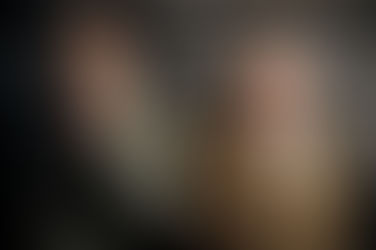The Glass Menagerie - A Clear Success
- Wynne Lang
- Mar 21, 2024
- 3 min read

Tennessee Williams' The Glass Menagerie at the Belgrade until Saturday. Photo courtesy of The Belgrade.
Glass Menagerie, the Belgrade Theatre, from Thursday 21 March to Sat 23 March. Directed by Atri Bannerjee.
Review by Wynne Lang.
The Glass Menagerie was Tennessee Williams’ first successful play. The title refers to the collection of glass animals shy, disabled Laura – sister of main protagonist Tom – keeps in their small apartment and towards which she directs feelings of love and tenderness she is otherwise unable to express.
Like his subsequent better-known works, Williams’ play explores themes of familial claustrophobia, attachment to a romanticised past, and frustrations presented by an uncertain present and future; these themes are clearly presented in this production at the Belgrade.

Natalie Kimmerling as Laura. Photo courtesy of the Belgrade Theatre.
The first half of the play is dominated by Amanda, a single mother who is fearful for the future of her children. Geraldine Somerville’s excellent portrayal shows the character as both brittle and domineering but with a deep love for her son, Tom, and Laura. Set in the 1930s, the play reflects a time when there were few opportunities for young people to move away from the lives their parents led, but things were beginning to change and Tom is more than ready to seize those opportunities.

Kasper Hilton-Hille as Tom. Photo courtesy of The Belgrade Theatre.
Tom, (very well performed by Kasper Hilton-Hille), works in a warehouse and his meagre wage supports the family, but he has dreams of seeing the world and becoming a writer. His nightly disappearances ‘to go to the movies’ provoke Amanda’s anxieties and hint at a secret life that Tom must keep hidden. Meanwhile his mother looks into their futures and can see only limited options for their security and happiness, and a precariousness as Tom is the sole breadwinner.

Geraldine Somerville as Amanda. Photo courtesy of The Belgrade Theatre.
The second half of the play focusses on the visit of Jim, a ‘gentleman caller’ for Laura that Amanda has longed for and browbeaten Tom into arranging. Jim is a work colleague of Tom’s who has been invited to dinner in the hope that he will be a future husband for Laura.

Zacchaeus Kazode as Jim. Photo courtesy of The Belgrade Theatre.
This visit is a challenge for the painfully shy young woman, and the inter-play between Jim and Laura, ably played by Zacchaeus Kayode and Natalie Kimmerling, reveals things about both characters, and contains tenderly conceived production ideas. The play itself appears weaker here as Williams overwrites – consequently there is a lot of dialogue to get through and as it lacks the sometimes entertaining frictions of the first half it has fewer moments of humour. It’s a credit to the production and the performances that the audience attention is held.

Zacchaeus Kazyode and Natalie Kimmerling. Photo courtesy of The Belgrade Theatre.
The plays of Tennessee Williams pose many challenges: how to present characters who are larger than life but have an inner fragility; how to recreate the claustrophobic atmosphere that is a hallmark of Williams’ plays – and then there is the wordiness. The Royal Exchange Theatre Company has tried to inject some variety of focus with the use of music and movement that go a long way to addressing these problems.

Geraldine Somerville and Natalie Kimmerling. Photo courtesy of The Belgrade Theatre.
Apart from the outstanding skill of the actors, the stage set is also pivotal to the success of this production. On a large round plinth there rotates a towering sign with the word PARADISE emblazoned across it. The changes of its speed and its lighting counterpoint the stage action and reflect the dreams of the past and the hopes for the future. The plinth, on which most of the drama takes place, is fringed by Laura’s fragile glass menagerie – but the boundary it imposes on the performers as they navigate its confined space without breaking things is a clever commentary on the play itself. As they prowl, round and round, they are themselves similar to captive animals.
For tickets visit: https://www.belgrade.co.uk/events/the-glass-menagerie/























Comments